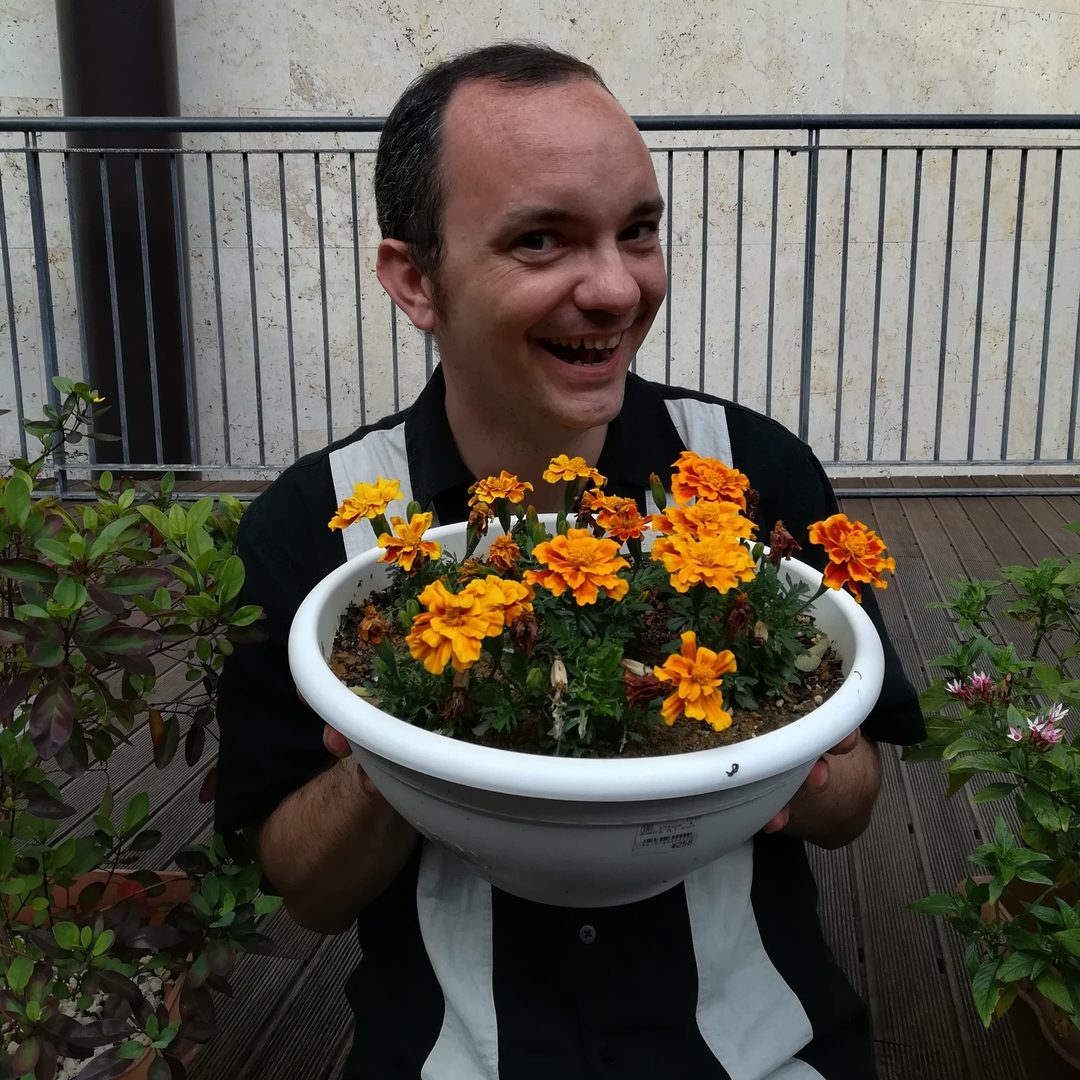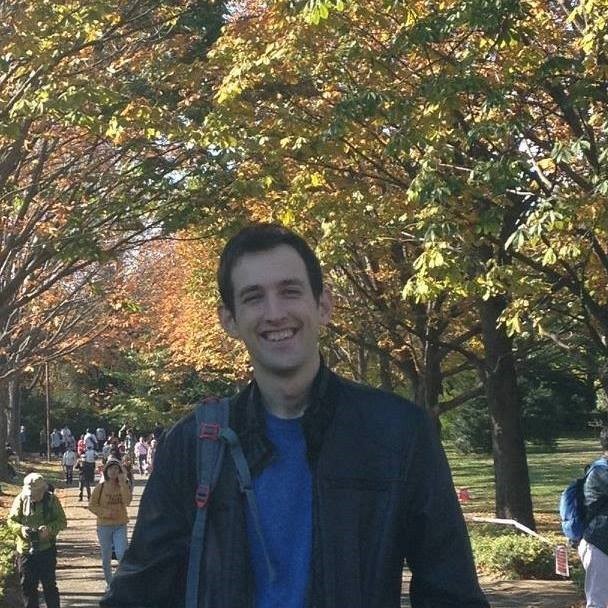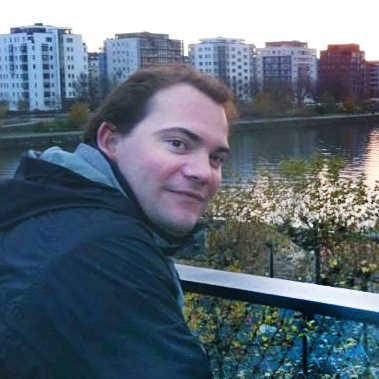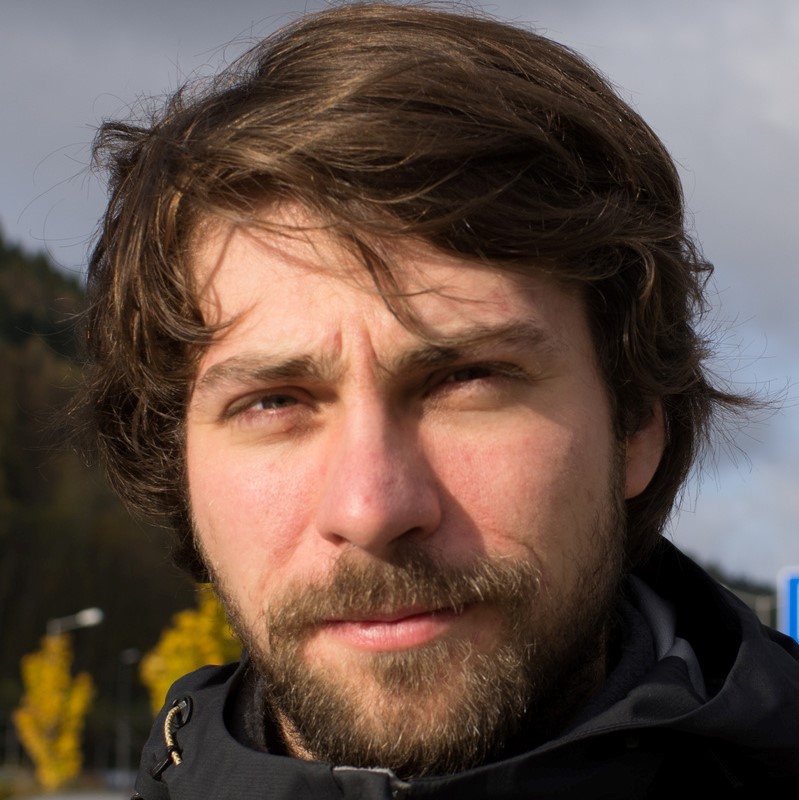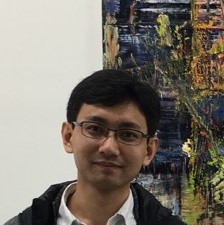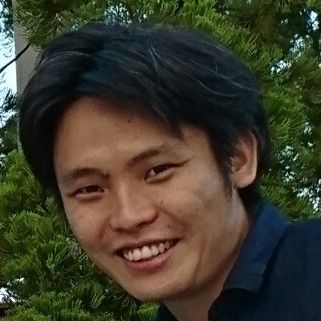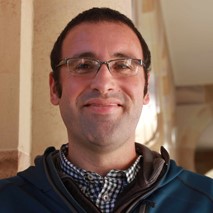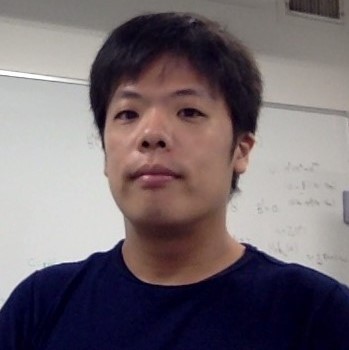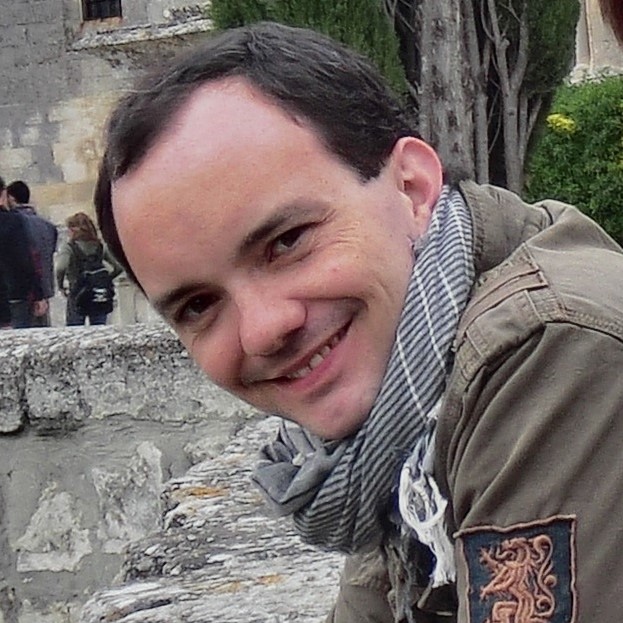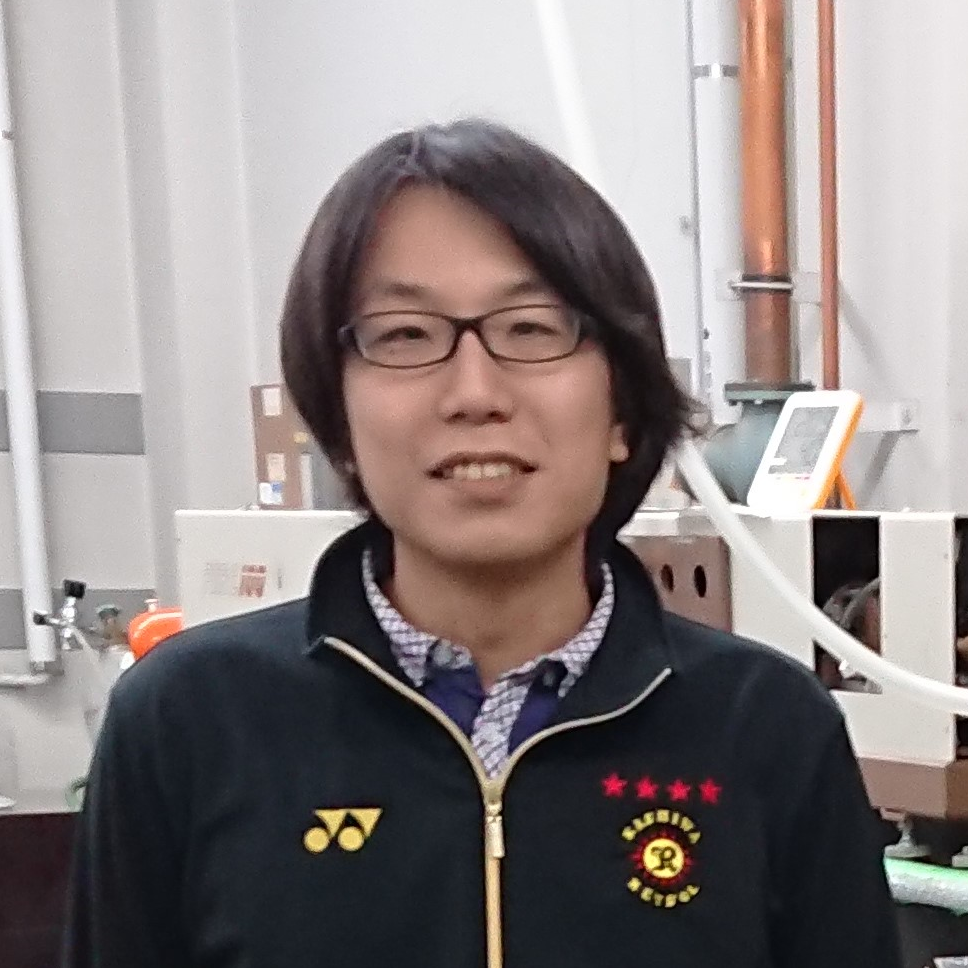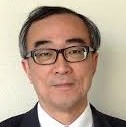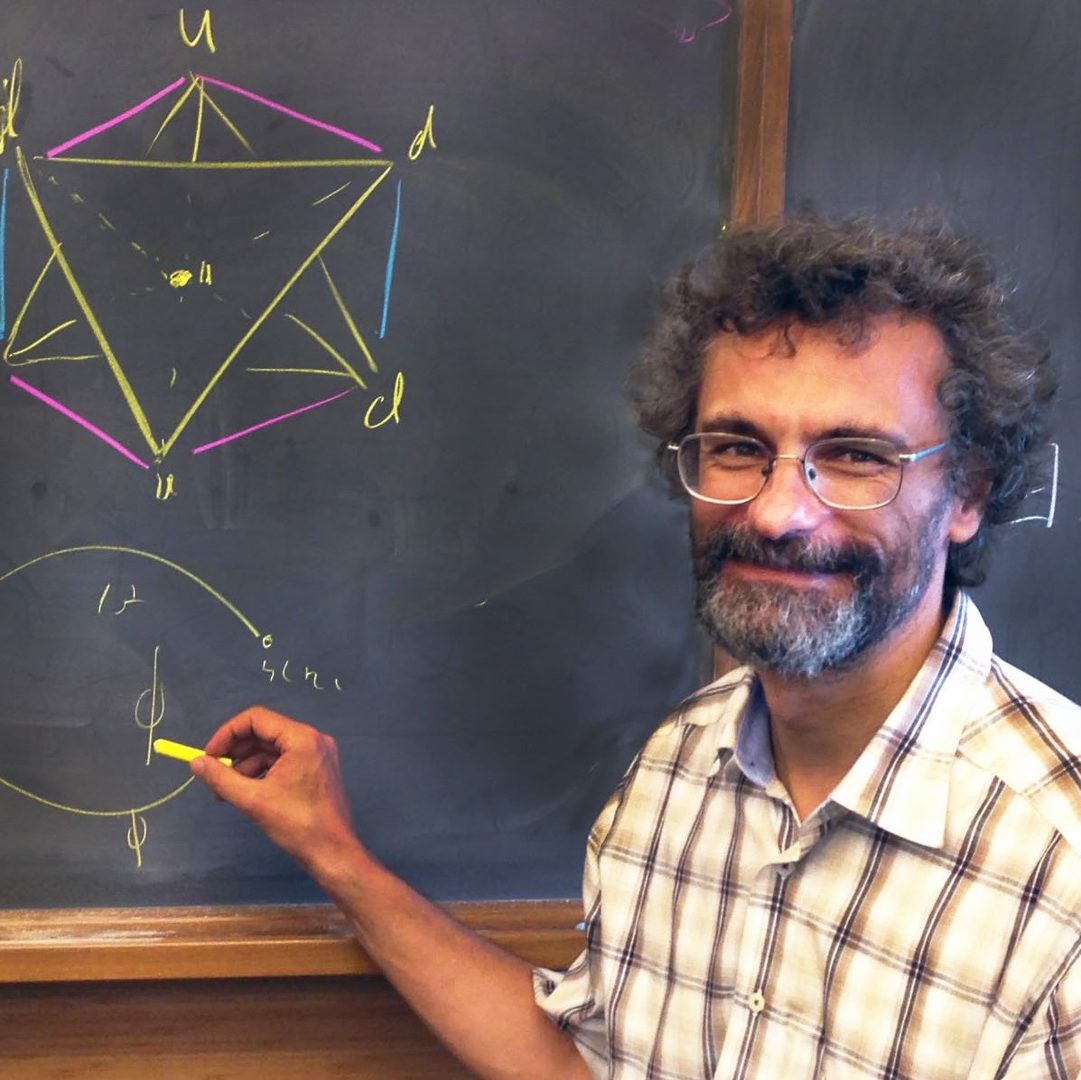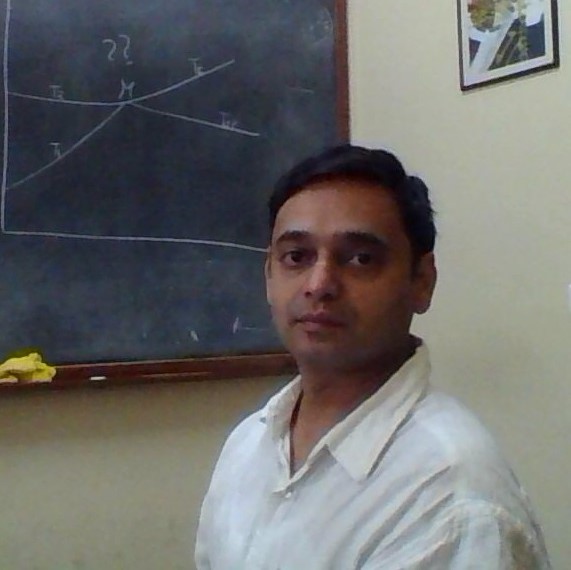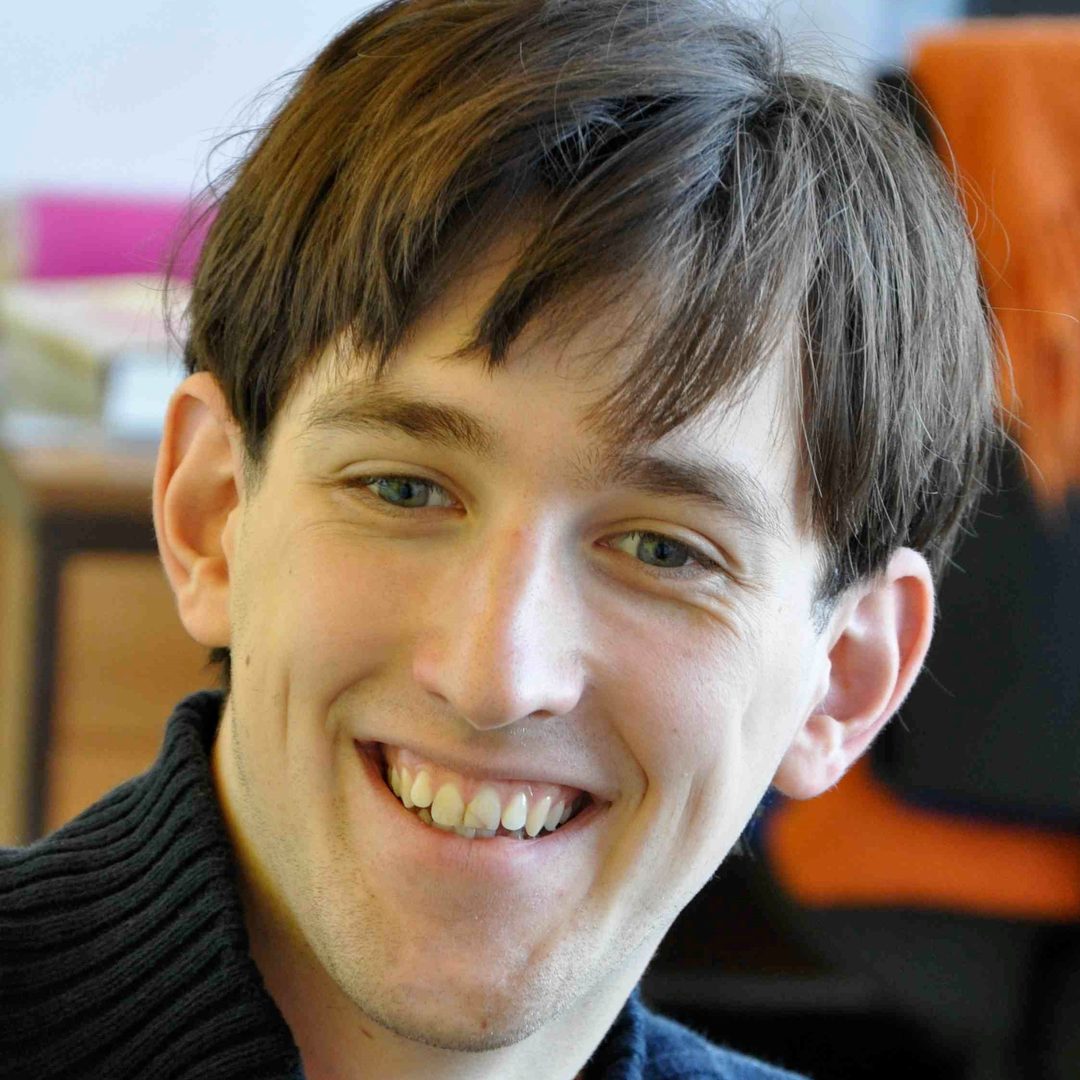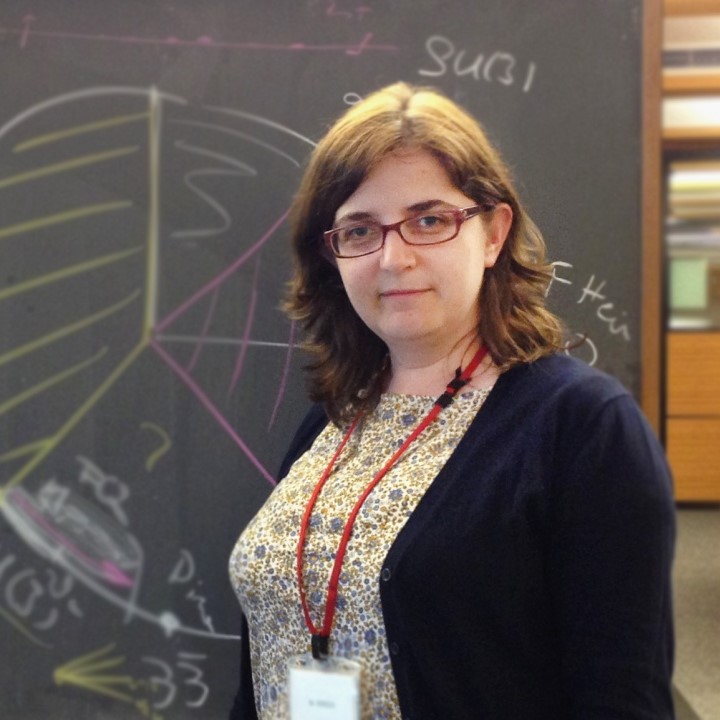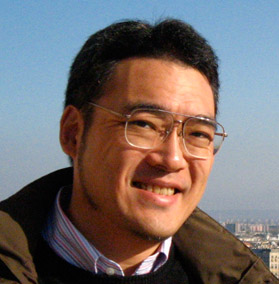FY2017 Annual Report
Theory of Quantum Matter Unit
Professor Nic Shannon
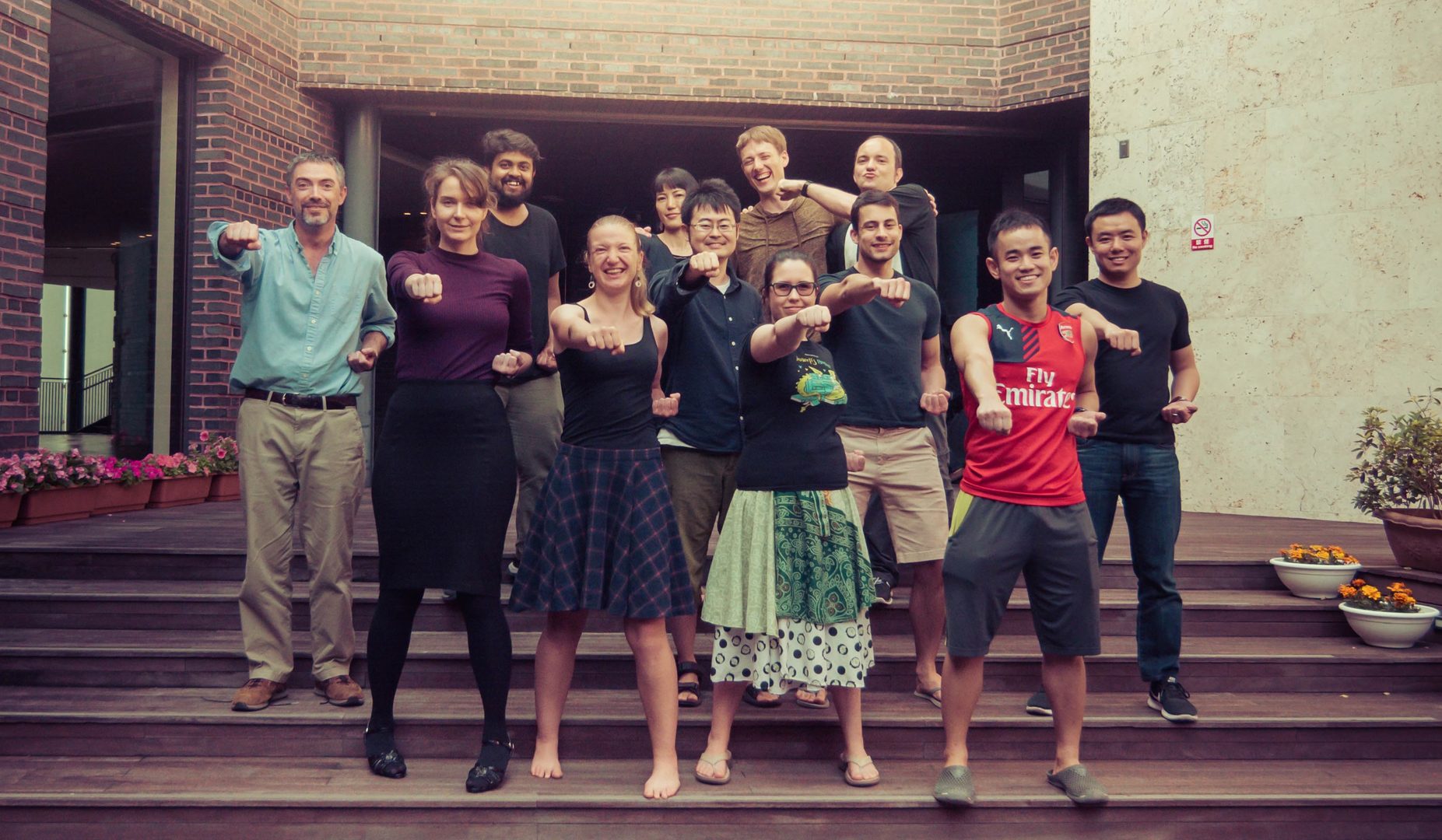
Abstract
FY2017 was another busy year for OIST's Theory of Quantum Matter (TQM) Unit. The Unit was pleased to welcome three new PhD students, Soshi Mizutani, Kim Remund and Andreas Thomasen; a new Research Unit Administrator, Ms Megumi Ikeda; and a new Postdoc, Geet Rakala. The Unit also bid farewell to three long-term members, Dr Karim Essafi, who took a postdoc position at the Sorbonne University, Paris; Dr Mathieu Taillefumier, who moved to a job in scientific computing at ETH Zurich; and the Unit's founding RUA, Ms Shiho Saito, who took up a new assignment within OIST.
A major event in the life of the Unit was the successful thesis defence of Rico Pohle, who received his PhD at OIST's first Graduation Ceremony, on Feb. 24th, 2018. Shortly afterwards, Tokuro Shimokawa was presented with the "Young Scientist Award" of the Physical Society of Japan (JPS), for his work on “Theoretical and numerical studies of the quantum spin liquid and ferrimagnetism in frustrated magnets”. Tokuro recieved his award in a special session of the 2018 JPS Spring Meeting. At the same time, Han Yan was successful in obtaining a JSPS DC2 Fellowship, to start in FY2018.
The Unit published 10 papers in FY 2017, including 3 in Physical Review Letters and one in Physical Review X. These covered a broad range of topics in frustrated magnetism, as well as work on the optical response of graphene quantum dots and the statistical physics of glassy membranes. Research highlights included the prediction of multipolar edge modes in a topological magnet; the possible observation of emergent photons in Pr2Hf2O7; and further progress in the theoretical understanding of quantum spin ice.
The Unit remained active in promoting its work, giving a total of 28 presentations in FY2017, including 17 invited talks. These presentations took place at international conferences including LT28; the APS March Meeting; the Spring and Fall Meetings of the Physical Society of Japan; international workshops at venures including the Institute of Physics (Beijing); Perimieter Institute and Seoul National University; as well as seminars at institutions including the University of Oxford, the University of Tokyo, and Technical University Munich.
The Unit hosted a total of 22 visitors in FY2017, who gave 15 research seminars on wide-ranging topics in qunatum magnetism. And it also continued its tradition of outreach activity, with Rico Pohle, Kim Remund and Andreas Thomasen organnising a session on superconductivity for children attending OIST's Science Festival and students participating in OIST's Science Challenge.
1. Staff
- Prof. Nic Shannon, Professor
- Dr Judit Romhanyi, Staff Scientist
- Dr Karim Essafi, Postdoctoral Scholar ( - Sep 2017)
- Dr Geet Rakala, Postdoctoral Scholar
- Dr Tokuro Shimokawa, Postdoctoral Scholar
- Ms Yurika Kubo, JSPS Fellow
- Ms Christina Lee, PhD Student
- Mr. Soshi Mizutani, PhD Student
- Mr. Rico Pohle, PhD Student
- Ms. Kimberly Remund, PhD Student
- Mr. Andreas Thomasen, PhD Student
- Mr. Han Yan, PhD Student
- Mr. Yuta Ito, Rotation PhD Student (Rotation)
- Ms. Darya Stepanenko, Rotation PhD Student (Rotation)
- Ms. Megumi Ikeda, Research Administrator (Oct 2017- )
- Ms. Shiho Saito, Research Administrator ( -Oct 2017)
2. Collaborations
2.1 Breathing asymmetry in pyrochlore and kagome lattices
- Researchers:
- Dr. Karim Essafi, OIST
- Dr. Ludovic Jaubert, OIST
- Prof. Masafumi Udagawa, Gakushuin University
2.2 Fully Anisotropic model on the kagome lattice
- Researchers:
- Dr. Karim Essafi, OIST
- Dr. Ludovic Jaubert, University of Bordeaux
- Dr. Owen Benton, RIKEN
2.3 Quenched disorder in crystalline membranes
- Researchers:
- Dr. Karim Essafi, OIST
- Mr. Olivier Coquand, Sorbonne University
- Prof. Dominique Mouhanna, Sorbonne University
- Dr. Jean-Philippe Kownacki, University of Cergy
2.4 Nematic phases and spin liquids on pyrochlores
- Researchers:
- Prof. Nic Shannon, OIST
- Dr. Owen Benton, RIKEN
- Mr. Han Yan, OIST
- Dr. Mathieu Taillefumier
- Prof. Rajiv Singh, UC Davis, USA
- Prof. Jaan Oitmaa, UNSW, Sydney, Australia
- Dr. Ludovic Jaubert, CNRS, Bordeaux
2.5 Characterisation of Er2Sn2O7
- Researchers:
- Prof. Nic Shannon, OIST
- Dr. Owen Benton, RIKEN
- Mr. Han Yan, OIST
- Dr. Ludovic Jaubert, CNRS, Bordeaux
2.6 Holography of spin ice
- Researchers:
- Prof. Nic Shannon, OIST
- Mr. Ankur Dhar, OIST
- Prof. Shintake Tsumoru, OIST
- Dr. Ludovic Jaubert, CNRS, Bordeaux
2.7 Breathing asymmetry in pyrochlore and kagome lattices
- Researchers:
- Dr. Karim Essafi, OIST
- Dr. Ludovic Jaubert, CNRS, Bordeaux
- Prof. Masafumi Udagawa, Gakushuin University
2.8 Fully Anisotropic model on the kagome lattice
- Researchers:
- Dr. Karim Essafi, OIST
- Dr. Ludovic Jaubert, CNRS, Bordeaux
- Dr. Owen Benton, RIKEN
2.9 Spin liquids of topological charges
- Researchers:
- Dr. Tomonari Mizoguchi, Gakushuin University
- Dr. Ludovic Jaubert, CNRS, Bordeaux
- Prof. Masafumi Udagawa, Gakushuin University
2.10 Thin film of spin ice
- Researchers:
- Dr. Ludovic Jaubert, CNRS, Bordeaux
- Dr. Taoran Lin, University of Waterloo, Canada
- Ms. Tuba Opel, University of Waterloo, Canada
- Prof. Peter Holdsworth, ENS Lyon, France
- Prof. Michel Gingras, University of Waterloo / Perimeter Institute, Canada
2.11 Dynamics of frustrated ferromagnetic spin chains
- Researchers:
- Mr. Soshi Mizutani, OIST
- Prof. Frank Pollmann, TUM
- Prof. Nic Shannon, OIST
2.12 Dynamics of spin-1 magnets
- Researchers:
- Ms. Kim Remund, OIST
- Dr. Rico Pohle, OIST
- Prof. Nic Shannon, OIST
3. Activities and Findings
3.1 Quantum Spin Ice with Frustrated Transverse Exchange: From a \(\pi\)-Flux Phase to a Nematic Quantum Spin Liquid
The search for quantum spin liquids (QSLs) is one of the defining problems of the current era of condensed matter physics. Many of the most promising candidates are found among rare-earth pyrochlore oxides R2M2O7, a family of materials which includes the celebrated "spin ices" Ho2Ti2O7 and Dy2Ti2O7. At present our understanding of these systems is based on perturbative theories around the limit of classical spin ice, and on Quantum Monte Carlo simulations in the case where the transverse exchange has unfrustrated sign. This leaves open the question of what happens perturbative limit, particularly where transverse exchange is frustrated and Quantum Monte Carlo simulations are unfeasible. This question is of particular relevance in understanding Pr-based pyrochlores, since microscopic calculations predict them to exhibit frustrated transverse exchange.
In this work, we address the problem of quantum spin ice with frustrated transverse exchange, considering a very simple model: the XXZ model on a pyrochlore lattice. We show that upon increasing the strength of frustrated transverse exchange the U(1) QSL known from quantum spin ice transforms into a new phase: the nematic QSL. The nematic QSL possesses strong quantum entanglement and gapless emergent photons, just like U(1) spin liquid. In addition, it acts as a quantum spin nematic - a quantum analogue of a classical liquid crystal. These results show that even the simplest models of pyrochlore magnets can support a range of different QSL ground states. They also introduce a new method, the cluster-variational calculation (cVAR), which may be helpful in a wide range of frustrated quantum systems.


Figure 3.1: Phase Diagram for frustrated quantum spin ice:
(a) Quantum ground state found in cluster-variational (cVAR) calculations.
(b) Finite-temperature phase diagram found in classical Monte Carlo simulations. The model considered is the XXZ model on a pyrochlore lattice, with \(J_{zz} = J\cos\theta, J_\pm = -J/2\sin\theta\) \(J_{zz} = J\cos\theta, J_\pm = -J/2\sin\theta\).
This work was published as Owen Benton et al., : "Quantum spin ice with frustrated transverse exchange: from pi-flux phase to nematic quantum spin liquid" Phys. Rev. Lett. 121, 067201 (2018)
3.2 Multipolar edge modes in the breathing kagome model
Since the discovery of topological insulators, a new phase of matter, the concepts of topology have quickly spread, revolutionizing today's physics. Interestingly, the discoveries made in weakly on non-interacting electron systems can be conveyed to the non-interacting excitations of correlated magnetic insulators. The physical realization of Haldane's model in the magnon spectrum of iron-based honeycomb insulators and the Weyl magnons emerging in breathing pyrochlore lattice illustrate well the progress of such magnetic analogues. Advantageously, the topological properties of magnon modes are easily controlled by magnetic field.
Here we take a relevant spin model of the trimerized kagome lattice treating the entangled trimers as the magnetic building blocks. The larger local Hilbert space characterizing the trimers naturally allows for multiplet excitations. In the chiral magnetic state, an effective spin-1/2 and spin-3/2 band is formed beside the gapless magnon mode. A small magnetic field removes the degeneracy of the multiplets and the excitations become topologically nontrivial with Chern numbers \(C_m = 2m\).
Increasing the magnetic field, the bands of the quartet undergo a topological transition when a spin-3/2 Dirac cone is formed by the touching of four bands. The spin-1/2 doublet carries only dipolar degrees of freedom, providing an analogue to the electronic systems. The spin-3/2 quartet, on the other hand, encompass higher multipolar characters which in the topologically nontrivial regime is manifested in novel multipolar edge states.
Topologically robust edge states traveling unimpeded at the boundaries are appealing for low- energy consuming fast spintronical devices. Multipolar edge states, put forward here, may be the stepping stone for new directions in these endeavors. A quadrupolar edge mode, for example, can couple to electric field and open a new route towards electric access and control of edge states emerging in the excitation spectrum of magnetic insulators.

(a) Spin-3/2 Dirac cone formed by the quartet excitations and the surface mapped out by the d vectors. The origin of the vectors touches the surface corresponds to the degeneracy of the bands at the Dirac point.
(b) In the topologically nontrivial regime the fully gapped bands are characterized by large Chern numbers and the origin is encompassed by the surface of the d vectors which form a skyrmion in the Brillouin zone.
(c) Opening the boundaries in the y-direction we find in-gap chiral edge modes.
(d) Novel quadrupolar edge states appearing as a consequence of larger spin-3/2 multiplet.
This work was published as Judit Romhányiare: "Multipolar edge states in the anisotropic kagome antiferromagnet" Phys. Rev. B 99, 014408 (2019)
3.3 Identification of Antiferromagnetic Domains Via the Optical Magnetoelectric Effect
The formation of an ordered stated is conventionally associated with the breaking of a symmetry. For example, magnetic order breaks time reversal symmetry while the ordering of electric dipole moments arises with the breaking of spatial inversion. In multiferroic materials more than one primary order coexist. Magnetoelectric multiferroics break both inversion and time-reversal symmetries. This collective symmetry breaking can lead to a coupling between the order parameters, so that one order can be manipulated with the conjugate field of the other. The prospect of electric control of magnetism makes magnetoelectric materials desirable for applications. In this research we demonstrate another functional property of magnetoelectric compounds, the so called optical directional anisotropy. On the account of the coupling between the magnetic and electric degrees of freedoms, the reciprocity of light propagation can be violated. In other words, the absorption in a material becomes different for light propagating in the opposite directions.
In the new generation magnetoelectric memory devices the different magnetoelectric domains serve as the bits of information. Here we reveal the optical read-out of such a magnetoelectric memory state, realized in antiferromagnetic and antiferroelectric LiCoPO4. LiCoPO4 exhibits linear magnetoelectric effect marked by finite components of the magnetoelectric susceptibility, \(\chi^{em}_{yx}\). The different domains are characterized by positive and negative \(\chi^{em}_{yx}\), enhancing or a reducing the refractive index \(N\). For example, in case of linearly polarized light with\( (E^\omega\| y, H^\omega\| x) \)propagating along the \(+z\) direction the refractive index is \(N_{+z} = \sqrt{\epsilon_{yy}\mu_{xx}}\pm\chi^{em}_{yx}\), where \(\epsilon_{yy}\) and \(\mu_{xx}\) are elements of the dielectric permittivity and magnetic permeability tensors, and the sign \(\pm\) distinguishes the two domains. Therefore, when the optical magnetoelectric effect is sufficiently strong, the domain characterized by \(\chi^{em}_{yx}(\omega)<0\) may become transparent, while the other domain absorbs photons more intensely. Reversing the light propagation is equivalent to interchanging the domains: \(N_{-z} = \sqrt{\epsilon_{yy}\mu_{xx}}\mp\chi^{em}_{yx}\). The direction of one-way-transparency depends on the crossed electric and magnetic fields. Such optical magnetoelectric effect may be used in hybrid optical architectures making LiCoPO4 an archetype of future optical memory devices and logic gates.

This work was published as Vilmos Kocsis et al., "Identification of Antiferromagnetic Domains Via the Optical Magnetoelectric Effect" Phys. Rev. Lett. 121, 057601 (2018)
3.4 How many spin liquids are there in Ca10Cr7O28?
Ca10Cr7O28 is a novel magnetic insulator with spin-1/2 Cr5+ ions on a bilayer breathing–Kagome lattice, as presented by Balz et al, Nature Physics 12, 942-949 (2016). Exchange interactions in Ca10Cr7O28 are predominantly ferromagnetic, giving rise to a positive Curie-Weiss temperature of 2.35 K. None the less, no magnetic order is observed down to 19 mK, making Ca10Cr7O28 an unusual example of a two-dimensional quantum spin liquid.
In this work Rico Pohle, Han Yan and Nic Shannon explored the nature and origin of the spin liquid behavior in Ca10Cr7O28 using semi-classical molecular-dynamics simulations.
Surprisingly, the excitations in this system encode not one, but two distinct types of spin liquids at different time scales. Fast fluctuations reveal a “Coulombic spin liquid”, seen by broad “bow-tie” features in the magnetic scattering function [see Fig. 3.4 (a)-(b)] which evolve in applied field into distinct “pinch-points”, as known from the classical Kagome antiferromagnet. On the other hand, slow fluctuations reveal a “spiral spin liquid”, which can be seen in form of “rings” in the magnetic scattering function [see Fig. 3.4 (c)-(d)], and understood by a mapping onto an effective spin-3/2 honeycomb model. These results provide a concrete scenario for a spin–liquid behavior in Ca10Cr7O28 , and highlight the possibility of different spin liquids, existing on multiple timescales.
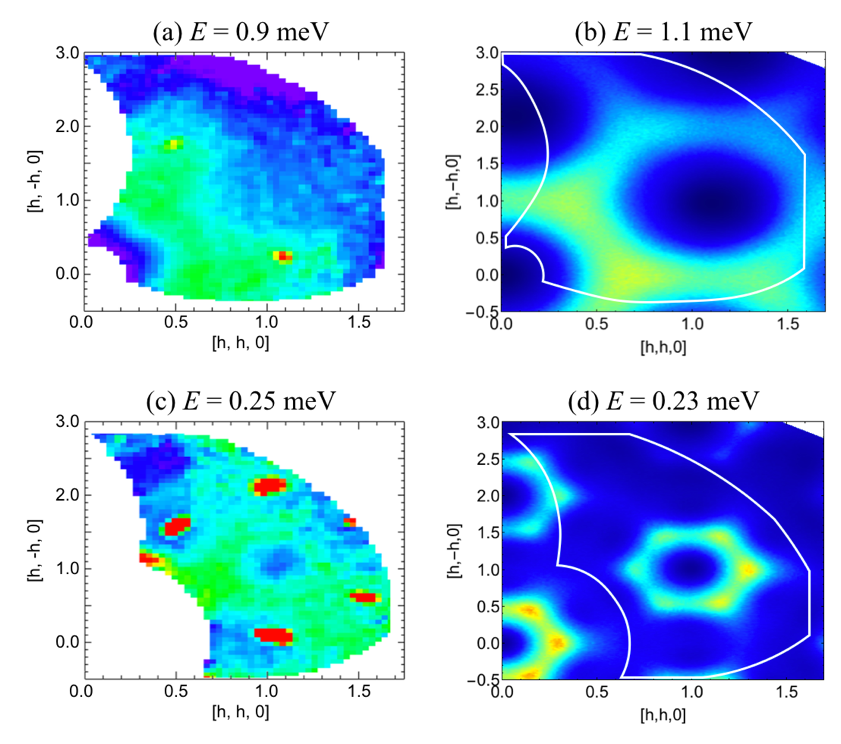
These results are described in the preprint : "How many spin liquids are there in Ca10Cr7O28?" Rico Pohle, Han Yan, Nic Shannon. arXiv: 1711.03778
3.5 A Glassy Phase in Quenched Disordered Graphene and Crystalline Membranes
Graphene is one of the most studied materials due to its unique mechanical, optical, thermal, chemical and electronic properties: high mechanical strength, optical transmittance, thermal conductivity, carrier mobility. These properties make graphene a very prommising compound for a broad range of technological applications: energy storage, ultrafilltration, gaz/electrochemical sensors, drug/gene delivery, bioimaging, chemo/bio sensing, etc. Properties of materials in general can be affected by the presence of defects, lattice imperfections (dislocations, grain boundaries, etc.) or impurities/vacancies. These defects are either generated during the chemical production process or explicitly added via dilution.
Motivated by the effect of defects on graphene, graphene-like materials and more generally crystalline membranes, Dr Karim Essafi from the TQM unit in collaboration with Oliver Coquand and Prof. Dominique Mouhanna (UPMC, France) and Dr Jean-Philippe Kownacki (Univ. of Cergy, France) investigate the flat phase of crystalline membranes submitted to both metric and curvature quenched disorders using a nonperturbative renormalization group approach. They identify a second order phase transition controlled by a finite-temperature/finite-disorder fixed point unreachable within the leading order of epsilon=4-D and 1/d-expansions. This critical point divides the flow diagram into two basins of attraction: that associated with the finite-temperature fixed point controlling the long distance behaviour of disorder-free membranes and that associated with the zero-temperature/finite-disorder fixed point (see Fig.3.1). Their work thus strongly suggests the existence of a whole low-temperature glassy phase for quenched disordered graphene, graphene-like compounds and crystalline membranes.
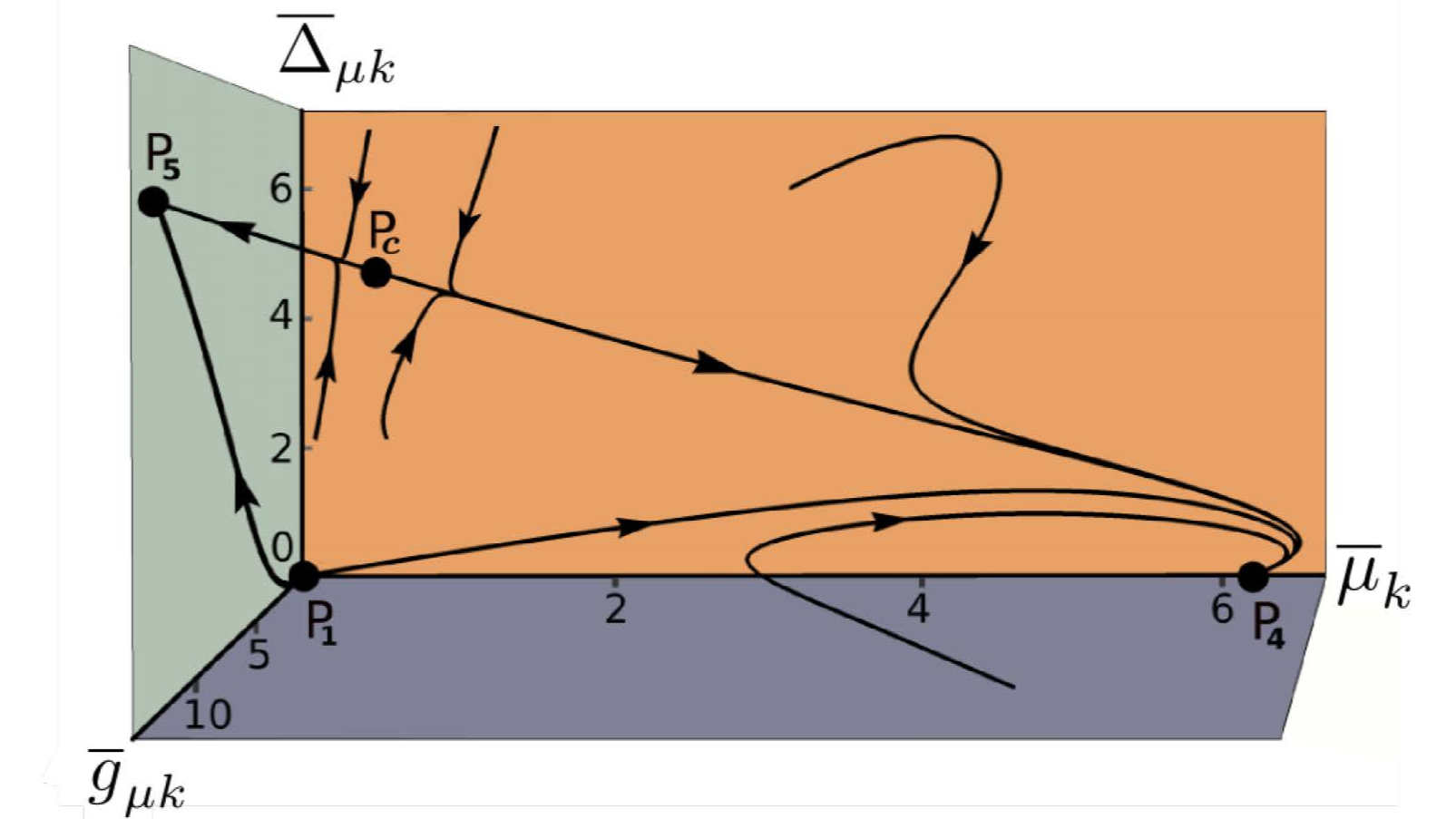
This work was published as O. Coquand et al., "A glassy phase in quenched disordered graphene and crystalline membranes" Phys. Rev. E 97, 030102 (2018)
3.6 Generic Nearest-Neighbour Kagome Model: XYZ & Dzyaloshinskii-Moriya, and Comparison with Pyrochlore
The kagome lattice, made of corner-sharing triangles, is an archetype of geometrical frustration. Motivated by recent rare-earth materials which may be expected to exhibit highly anisotropic exchange interactions, Dr Karim Essafi, Dr Owen Benton and Dr Ludovic Jaubert studied the most general nearest-neighbour Hamiltonian allowed by symmetry (group C3v). This Hamiltonian includes XYZ and Dzyaloshinskii-Moriya (DM) interactions.
Their group theoretical approach allows for a systematic description of the ground-state for a broad region of parameter space. The resulting picture is a connected map of ordered phases and spin liquids (see Fig.2.1). In particular it sheds new light on the mapping between three different spin liquids (along the XXZ, XXZ+ and XXZ- lines).
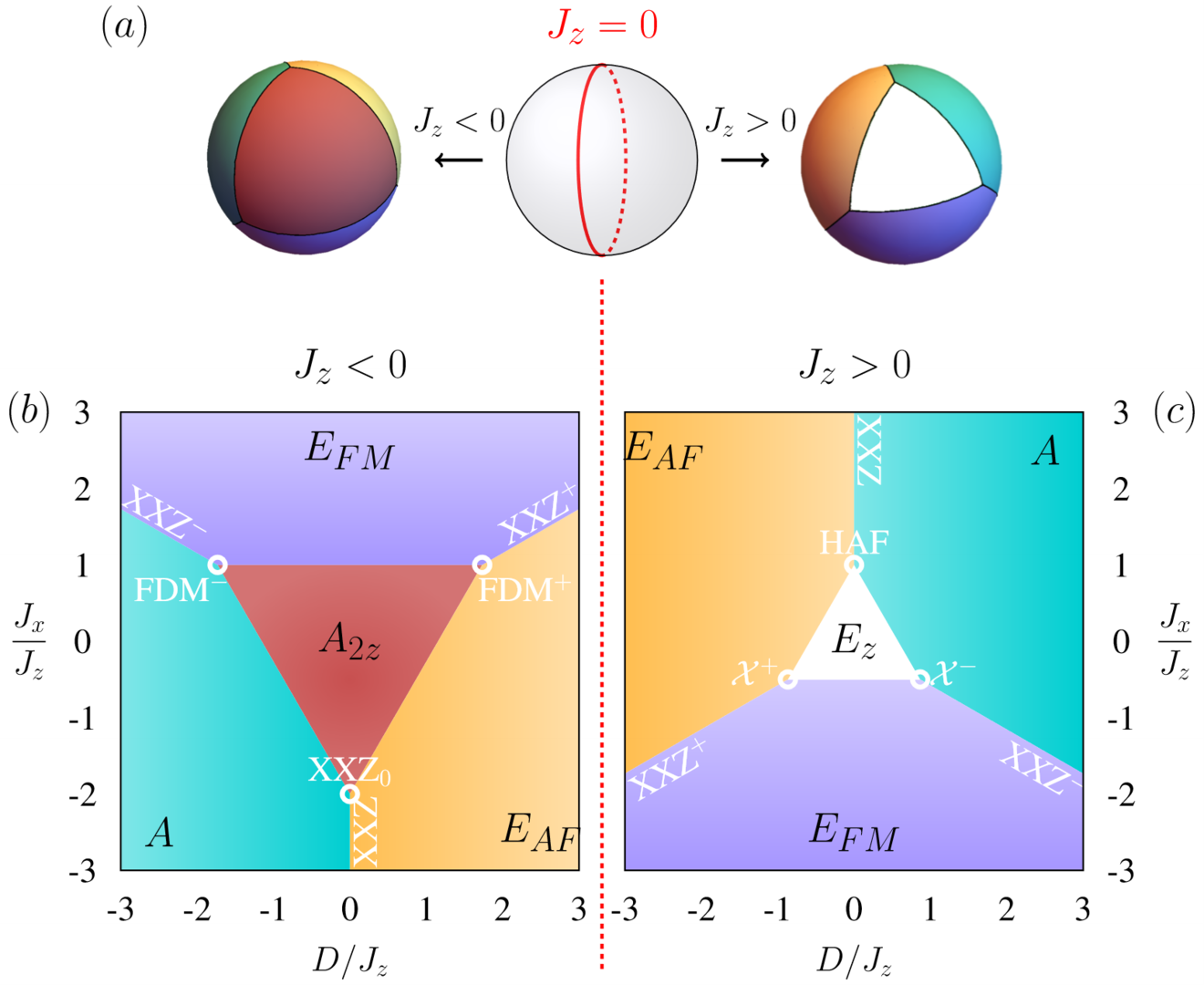

This work was published as K. Essafi, O. Benton & L.D.C. Jaubert "Generic Nearest-Neighbour Kagome Model : XYZ & Dzyaloshinskii-Moriya, and Comparison to Pyrochlore". Phys. Rev. B 96, 205126 (2017)
3.7 Experimental signatures of emergent electrodynamics in Pr2Hf2O7
Spin ice, a magnet which mimics the behaviour of protons in water ice, has become famous as a condensed-matter system which realises magnetic monopole excitations. Recently there has also been considerable excitement about the possibility of a "quantum spin ice", in which spin fluctuate between different ice-like configurations. Following extensive numerical simulations, there is now a theoretical consensus that such a system would realise an emergent electrodynamics, in which the magnetic monopoles of spin ice become fractional spin excitations, accompanied by quantized excitations of a U(1) gauge field: photons. Identifying a quantum spin ice in experiment, however, has proved challenging.
In an earlier work [O. Benton et al., Phys. Rev B 86, 075154 (2012)], members of the TQM Unit identified a key experimental feature of the photons in a quantum spin ice; the suppression of the "pinch points" seen in neutron scattering experiments on classical spin ice. Now, in collaboration with a team of experimental physicists based at the Paul Scherer Institute (Switzerland), members of the TQM have probed the magnetic excitations of a promising candidate quantum spin ice, Pr2Hf2O7. This analysis confirms the existence of suppressed pinch--point features in Pr2Hf2O7, consistent with the emergent electrodynamics sought in a quantum spin ice.

a) Inelastic neutron scattering at low energy. b) Equivalent prediction of the simplest model of a quantum spin ice. c) Quantitative fit of a quantum spin ice model to a cross section of the data, showing suppression of a pinch point.
This work was published as Romain Sibille et al., "Experimental signatures of emergent electrodynamics in Pr2Hf2O7". Nature Physics 14, 711-715 (2018)
3.8 Exact diagonalization and cluster mean-field study of triangular-lattice XXZ antiferromagnets near saturation
Macroscopic degeneracy in frustrated magnetism could be a source of nontrivial magnetic states which are often lifted by fluctuation effects, either thermal or quantum. Tokuro Shimokawa from the TQM unit and co-workers have investigated the effect of the quantum fluctuation on the ordering process of the triangular antiferromagnets with XXZ-type anisotropy near saturation.
In this model, it has been suggested the possible realization of a nontrivial coplanar phase, called π-coplanar (or π) phase, in a certain range of anisotropy parameter J/Jz besides the well-known 0-coplanar (or V) and umbrella phases. For the most quantum case of S=1/2, a careful identification analysis with the large-scale exact diagonalization calculations shows that the lowest eigenstate is a chirally antisymmetric combination of finite-size umbrella states for J/Jz 
We also perform a cluster mean-field plus scaling analysis which enable us to distinguish between the 0- and π-coplanar states since the symmetry of the system is broken by self-consistent mean-fields even on finite-size systems. The obtained results, together with the previous large-S analysis, indicate that the π-coplanar phase exists for any S except for the classical limit (S → ∞). The existence range in J/Jz is largest in the most quantum case of S=1/2.

Figure 3.8-1: Spin configurations for 0- and π-coplanar states and umbrella state, respectively.

This work was published as Daisuke Yamamoto et al., "Exact diagonalization and cluster mean-field study of triangular-lattice XXZ antiferromagnets near saturation" Phys. Rev. B, 96, 014431 (2017)
4. Publications
4.1 Journals
"A glassy phase in quenched disordered graphene and crystalline membranes"
O. Coquand, K. Essafi, J.-P. Kownacki, D. Mouhanna
Phys. Rev. E 97, 030102 (2018)
"Symmetry and optical selection rules in graphene quantum dots"
Rico Pohle, Eleftheria G. Kavousanaki, Keshav M. Dani, Nic Shannon
Phys. Rev. B 97, 115404 (2018)
"Competing spin liquids and hidden spin-nematic order in spin ice with frustrated transverse exchange"
Mathieu Taillefumier, Owen Benton, Han Yan, Ludovic Jaubert and Nic Shannon
Phys. Rev. X 7, 041057 (2017)
"Direct observation of spin-quadrupolar excitations in Sr2CoGe2O7 by high field ESR"
Mitsuru Akaki, Daichi Yoshizawa, Akira Okutani, Takanori Kida, Judit Romhányi, Karlo Penc, Masayuki Hagiwara
Phys. Rev. B 96, 214406 (2017)
"Generic nearest-neighbour kagome model: XYZ & Dzyaloshinskii-Moriya, and comparison to pyrochlore"
Karim Essafi, Owen Benton, L. D. C. Jaubert
Phys. Rev. B 96, 205126 (2017)
"Exact diagonalization and cluster mean-field study of triangular-lattice XXZ antiferromagnets near saturation"
Daisuke Yamamoto, Hiroshi Ueda, Ippei Danshita, Giacomo Marmorini, Tsutomu Momoi, Tokuro Shimokawa
Phys. Rev. B 96, 0144310 (2017)
"Clustering of Topological Charges in Kagome Classical Spin Liquid"
Mizoguchi Tomonari, L. D. C. Jaubert and Masafumi Udagawa
Phys. Rev. Lett. 119, 077207 (2017)
"Flat bands and Dirac cones in breathing lattices"
Karim Essafi, L. D. C. Jaubert and Masafumi Udagawa
J. Phys.: Condens. Matter 29 (2017) 315802
"Spin-Orbit Dimers and Non-Collinear Phases in d1 Cubic Double Perovskites"
Judit Romhányi, Leon Balents, George Jackeli
Phys. Rev. Lett. 118, 217202 (2017)
"Spin Ice Thin Film: Surface Ordering, Emergent Square Ice, and Strain Effects"
L.D.C. Jaubert , T. Lin, T.S. Opel, P.C.W. Holdsworth and M.J.P. Gingras
Phys. Rev. Lett. 118, 207206 (2017)
4.2 Books and other one-time publications
Nothing to report.
4.3 Oral and Poster Presentations
Invited Oral Presentations:
- Judit Romhanyi "Chernful multiplet excitations in the breathing kagome model" Budapest University of Technology and Economics, Hungary (2017.12.22)
- Tokuro Shimokawa "Thermal properties of S=1/2 kagome Heisenberg antiferromagnet" 研究会「第二回 量子スピン液体研究の新展開」, Tokyo University, Japan (2017.12.13)
- Rico Pohle "Origin of spin liquid behavior in Ca10Cr7O28" Condensed Matter Theory Laboratory, RIKEN, Japan (2017.12.12)
- Rico Pohle "Origin of spin liquid behavior in Ca10Cr7O28" Computational Condensed Matter Physics Laboratory, RIKEN, Japan (2017.12.11)
- Han Yan "Topological States: New Paradigm of Phases of Matter" OIST internal seminar (2017.12.08)
- Nic Shannon "Quantum spin nematics" Superconductivity and Vortex Physics, OIST, Okinawa, Japan (2017.11.28)
- Tokuro Shimokawa "Multiple-q state in J1-J2 classical frustrated honeycomb-lattice antiferromagnet" Kawamura laboratory seminar, Osaka University, Japan (2017.11.07)
- Nic Shannon "How many spin liquids are there in Ca10Cr7O28?" Okayama University, Japan (2017.09.29)
- Judit Romhanyi "Chernful multiplet excitations in the breathing kagome model" Topological Properties in Quantum Magnets, Budapest, Hungary (2017.08.30)
- Nic Shannon “How many spin liquids are there in Ca10Cr7O28?" 1st Asia–Pacific Workshop for Quantum Magnetism, Seoul National University, Korea (2017.08.30)
- Karim Essafi "Chiral Spin Liquids & Anomalous Hall Effect on the Kagome Lattice" 28th International Conference on Low Temperature Physics, Gothenburg, Sweden (2017.08.14)
- Nic Shannon “How many spin liquids are there in Ca10Cr7O28?" Technical University Munich, Germany (2017.08.09)
- Nic Shannon “Frustrating quantum spin ice" Conference on “ Topological States and Phase Transitions in Strongly Correlated Systems, Beijing, China (2017.07.20)
- Nic Shannon “How many spin liquids are there in Ca10Cr7O28?" Clarendon Laboratory, University of Oxford, U.K. (2017.07.12)
- Rico Pohle “Signatures of Novel Spin Liquids in Kagome-like Lattices” LOMA, University of Bordeaux, France (2017.07.04)
- Karim Essafi "Why Symmetry Matters" OIST internal seminar (2017.06.21)
- Nic Shannon “Frustrating quantum spin ice: a tale of three spin liquids, and hidden order" Perimeter Institute for Theoretical Physics, Waterloo, Canada (2017.06.08)
- Nic Shannon “Quantum Water Ice” ISSP, University of Tokyo (2017.05.29)
- Nic Shannon “Quantum Water Ice” CEMS, RIKEN, Japan (2017.05.18)
Contributed Oral Presentations:
- Han Yan "Unification of pinch-points and half-moons in spin liquids"APS March meeting, Los Angeles, USA (2018.03.07)
- Rico Pohle “How many spin liquids are there in Ca10Cr7O28” APS March meeting, Los Angeles, USA (2018.03.07)
- Rico Pohle "Origin of spin liquid behavior in Ca10Cr7O28" New Developments in Research of Quantum Spin Liquids, University of Tokyo, Japan (2017.12.13)
- Han Yan "Origin of Quantum Spin Liquid behavior of Ca10Cr7O28" Novel Quantum States in Condensed Matter 2017, Kyoto, Japan (2017.11.15)
- Andreas Thomasen "Triangle Drama and Frustration – Multibosons on a Breathing Kagome Lattice" 2017 European School on Magnetism, Corsica, France (2017.10.09)
- Tokuro Shimokawa, Hikaru Kawamura "J1-J2古典ハニカム格子ハイゼンベルク反強磁性体に現れる多重q秩序状態 Multiple-q states in the J1-J2 classical honeycomb-lattice Heisenberg antiferromagnet" The Physical Society of Japan 2017 Autumn Meeting, Morioka, Iwate, Japan (2017.09.21)
- Andreas Thomasen "Triangle Drama and Frustration – Multibosons on a Breathing Kagome Lattice" School and Workshop on Quantum Information, Trieste, Italy (2017.08.22)
- Tokuro Shimokawa, Hikaru Kawamura "Thermal and quantum fluctuation effects on the ordering of the S=1/2 kagome Heisenberg antiferromagnet" The 28th International Conference on Low Temperature Physics, Gothenburg, Sweden (2017.08.21)
- Han Yan "Spin liquid and emergent gauge theory" Exact method on low dimensional statistical physics, Cargese, France (2017.07.29)
5. Intellectual Property Rights and Other Specific Achievements
- Tokuro Shimokawa "Young Scientist Award of the Japan Physical Society (JPS)" (2018)
- Andreas Thomasen, 3rd place and won the book Electronic Structure by Richard M. Martin at "Triangle Drama and Frustration – Multibosons on a Breathing Kagome Lattice" European School on Magnetism, Corsica, France (2017.10.09)
- Andreas Thomasen, 1st place and won 10.000 yen at "Triangle Drama and Frustration – Multibosons on a Breathing Kagome Lattice" OIST PhD Student Poster Presentation, Okinawa, Japan (2017.7.20)
6. Meetings and Events
6.1 Research Visits - Seminars
26th-30th March 2018
Karlo Penc - Professor, Wigner Research Centre for Physics, Budapest, Hungary
Peter Balla - PhD Student, Wigner Research Centre for Physics, Budapest, Hungary
5th-20th March 2018
Ludovic Jaubert - CNRS Researcher at LOMA, University of Bordeaux
19th-23rd February 2018
John Owen Benton - Postdoc, RIKEN
Seminar: Symmetry and topology in tripod kagome magnets
13th-23rd February 2018
Mathieu Taillefumier - ETH Zurich
13th-16th February 2018
Johannes Reim - JSPS Fellow, IMRAM, Tohoku University
Seminar: Stabilizing the skyrmion phase in Cu2OSeO3: The influence of field, temperature and time
5th-9th February 2018
Bella Lake - Professor, Helmholtz Zentrum Berlin for Materals and Energy
Seminar: Experimental investigation of quantum spin liquids
22nd-26th January 2018
Matthias Gohlke - Doctoral Student, Max Planck Institute for the Physics of Complex System
Seminar: Kitaev-Model in a [111] Magnetic Field and its Topological Excitations
18th-19th January 2018
Masahiko Yamada - PhD Student, The Institute for Solid State Physics, The University of Tokyo
Seminar: Quantum Spin Liquids Coupled to Other Degrees of Freedom
2nd-4th October 2017
Yasuyuki Kato - Research Associate, The University of Tokyo
Seminar: Magnetoelectric properties in antiferromagnets composed of square cupolas
Akiko Masaki-Kato - Postdoctoral Researcher, Riken
Group Seminar: Spin dynamics in S=1/2 unfrustrated square lattice antiferromagnet - fate of magnon excitations
20th-22nd September 2017
Ben Powell - Professor, University of Queensland
Seminar: Spin molecular-orbital coupling
13th-17th September 2017
Miklos Lajko - Postdoctoral Researcher, EPFL Lausanne
Seminar: Generalization of the Haldane conjecture to SU(3) chains
5th-8th September 2017
Shunsuke Furuya - RIKEN
Seminar: Theory of electron spin resonance for detecting spin-nematic orders in quantum magnets
18th-21st July and 4th-8th September 2017
Ludovic Jaubert - CNRS Researcher, LOMA, University of BordeauxContent
21st - 23rd June 2017
Mitsuru Akaki - Assistant Professor, Osaka University
Seminar:Direct observation of spin-quadrupolar excitations in Sr2CoGe2O7 by high field ESR
21st - 23rd June 2017
Masayuki Hagiwara - Professor, Osaka University
21st - 23rd June 2017
Karlo Penc - Professor, Wigner Research Centre for Physics, Hungarian Academy of Sciences
15th -18th May 2017
Kedar Damle - Associate Professor, Tata Institute of Fundamental Research
Seminar: Melting of three-sublattice order: How does a KT phase pinch-off?
18th - 21st April 2017
John Owen Benton - Postdoc, RIKEN
Seminar: Condensation of Topological Excitations in Highly Frustrated Ising Models
28th March - 20th April 2017
Olga Sikora - Adjunkt, Jagiellonian University, Krakow
Seminar: Spin ice in a magnetic field
6.2 Lecture Courses
24th - 26th May 2017
Keisuke Totsuka - Associate Professor, YITP, Kyoto University
Short Lecture Course: Introduction to Symmetry-Protected Topological Phases
7. Other
7.1 Outreach
- OIST Science Challange (Mar 10-17 2018)
Kimberly Remund, Andreas Thomasen : "Demonstration on superconductivity and the Meissner effect using magnetic levitation" OIST, Japan - OIST Science Festival (Nov 9 2017)
Kimberly Remund, Andreas Thomasen, Rico Pohle : "Demonstration on exciting low-temperature quantum phenomena" OIST, Japan
Christina Lee : "Geology and various minerals from all around the world" OIST, Japan - JuliaCon (Jun 21 2017)
Christina Lee : "Teaching with Code" Berkeley, USA





